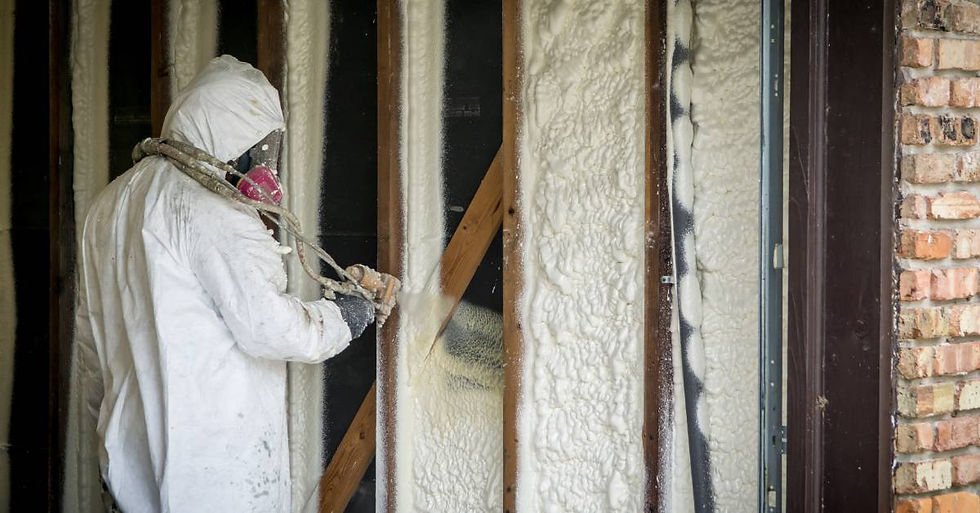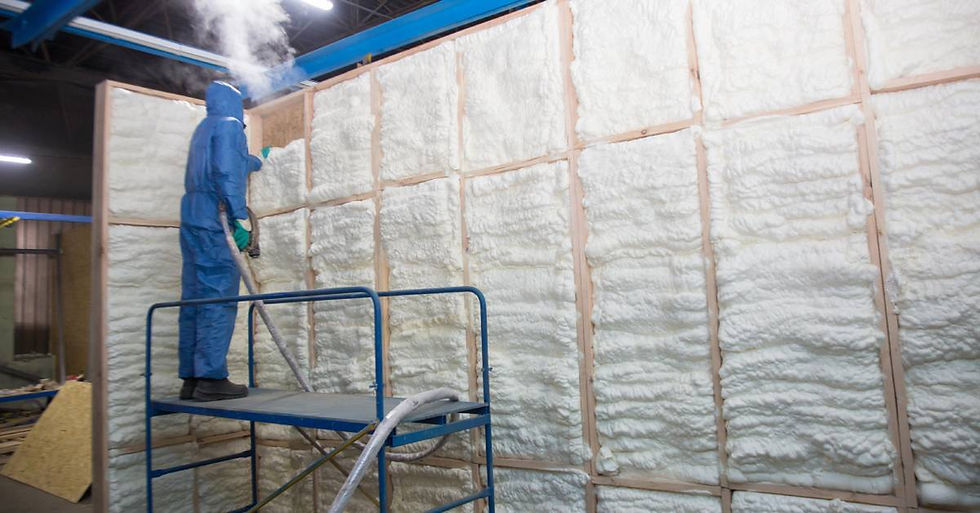The Growth and Future of the Spray Foam Industry
- James King
- Feb 10
- 4 min read

The spray foam industry is a vital part of modern construction and insulation, providing innovative solutions for energy efficiency, durability, and environmental sustainability. From improving home comfort to reducing energy bills, spray foam revolutionizes how we think about insulation, sealing, and building integrity. But where did this industry start, and where is it headed?
This post dives into the growth and future of the spray foam industry, shedding light on current trends and the projected future. Whether you’re a professional who works with spray foam every day or a consumer exploring better insulation solutions, you’ll discover everything you need to know in this comprehensive guide.

A Brief Introduction to the Spray Foam Industry
Spray foam is a versatile, high-performance solution designed to address common challenges in construction. Spray foam insulation expands upon application, forming an airtight seal that boosts energy efficiency, mitigates moisture buildup, and enhances structural strength. It’s widely used in residential, commercial, and industrial projects.
The major advantage of spray foam lies in its ability to contribute to sustainable building practices while providing long-term savings for property owners. With energy efficiency and environmentally friendly construction becoming high priorities worldwide, spray foam now plays a key role in driving innovation in the building sector.
Historical Growth and Advancements in Spray Foam Technology
The roots of the spray foam industry date back to the 1940s. Otto Bayer, a German chemist, developed the foundational polyurethane chemistry that makes today’s spray foam possible. However, it wasn’t until the late 1970s and early 1980s that spray foam gained traction in construction, thanks to advancements in equipment and formulation.
Early spray foam faced challenges with consistency, performance, and cost. But over the last few decades, significant investment in research and development has led to:
Improved materials for better durability and insulation performance.
Safety-enhanced formulas, reducing potential environmental and health risks.
Advanced application equipment, allowing for precise, efficient implementation.
Open- and closed-cell options, meeting diverse structural and insulation needs.
These advancements have paved the way for spray foam to become a go-to choice for builders, architects, and homeowners.
Current Market Trends in the Spray Foam Industry
The spray foam industry has experienced remarkable growth in recent years, driven by several key trends shaping the market.
A Focus on Energy Efficiency
With energy costs rising globally, consumers and businesses seek more energy-efficient solutions. Spray foam insulation delivers comprehensive energy savings compared to traditional materials like fiberglass, thanks to its superior air-sealing properties.
Eco-Friendly Construction Practices
Consumers and businesses are increasingly aware of the environmental impact of their choices. Bio-based spray foam, developed with renewable raw materials, is gaining traction, offering lower greenhouse gas emissions without compromising performance.
Rapid Urbanization and Infrastructure Development
The surge in urbanization in Asia-Pacific and Latin America is propelling the demand for spray foam solutions. Construction projects in these regions often prioritize cost-effective, durable, and energy-efficient approaches, with spray foam as a preferred choice.
Increasing Adoption of Green Building Standards
Certification systems like Leadership in Energy and Environmental Design (LEED) and evolving building codes now emphasize sustainable materials. Spray foam aligns with these standards by improving energy efficiency and reducing carbon footprints.
Rising Demand for Retrofitting
Aging buildings across Europe and North America have led to a growing retrofitting market where spray foam is often used to upgrade insulation and improve energy performance.

Industries Transforming Operations With Spray Foam
While spray foam is best known for its residential and commercial construction applications, it’s made its mark in other industries too. Here are some areas where spray foam plays a vital role:
Agriculture: Used for insulating barns, poultry houses, and storage facilities, spray foam ensures consistent temperature control to protect livestock and produce.
Automotive: Engineers rely on spray foam for lightweight, soundproof materials in vehicle manufacturing.
Industrial refrigeration: Spray foam maintains optimal insulation in cold storage units and transportation, preventing losses in temperature-sensitive goods.
Marine: Boat manufacturers use spray foam for flotation, safety, and insulation in watercraft.
Oil and gas: Spray foam is often deployed to insulate pipelines and tanks, maintaining efficiency, even under extreme weather conditions.
The Future of Spray Foam
The spray foam industry is poised for continued growth due to its adaptability and relevance in evolving markets. Here’s how the future of the industry is shaping up:
Adapting to New Building Codes
Stringent building codes in North America, Europe, and beyond are mandating higher energy efficiency standards. As these requirements grow stricter, spray foam is likely to become a primary insulation material because of its capability to meet and exceed these regulations.
Integration of Smart Technologies
Manufacturers have begun exploring ways to integrate smart technologies into spray foam products, enabling real-time monitoring of insulation performance and energy efficiency.
Innovative Formulation Developments
R&D in materials science is paving the way for new foam formulations with enhanced thermal resistance, biodegradability, and chemical safety.
Expansion Into Emerging Markets
Developing economies with booming construction industries will drive the demand for affordable, high-performance solutions. Spray foam is well-positioned to meet this need.
Tips for Choosing the Right Spray Foam Solutions
Whether you’re a business owner or homeowner, follow these practical tips to select the right spray foam for your needs:
1. Understand Your Requirements
Determine if you need insulation for temperature control, soundproofing, or structural reinforcement. Open-cell foam is ideal for sound absorption, while closed-cell foam offers superior thermal insulation and water resistance.
2. Check for Certifications
Look for products compliant with building codes and environmental standards. Certifications like GREENGUARD and ENERGY STAR indicate safe, sustainable choices.
3. Prioritize Professional Installation
Spray foam application requires expertise to get the job done right. Hire certified installers for proper application and maximum long-term performance.
4. Consider Longevity and Cost
While spray foam might have a higher upfront cost, its durability and energy savings make it a much more economical choice over time.
Why Spray Foam Is a Cornerstone for the Future of Construction
Spray foam combines energy efficiency with versatile applications and improved sustainability, making it a must-have for modern construction. Exploring the growth and future of the spray foam industry presents key insights for businesses, consumers, and the planet.
Are you ready to reap the benefits of spray foam insulation in your next construction project? Handcrafted Hose Company offers the essential equipment you’ll need to get the job done right. A spray foam insulation hose from our store will ensure quality application every time. Take your building’s insulation to the next level with our products!





